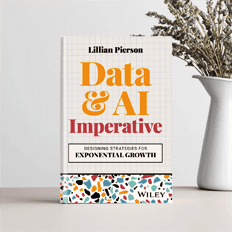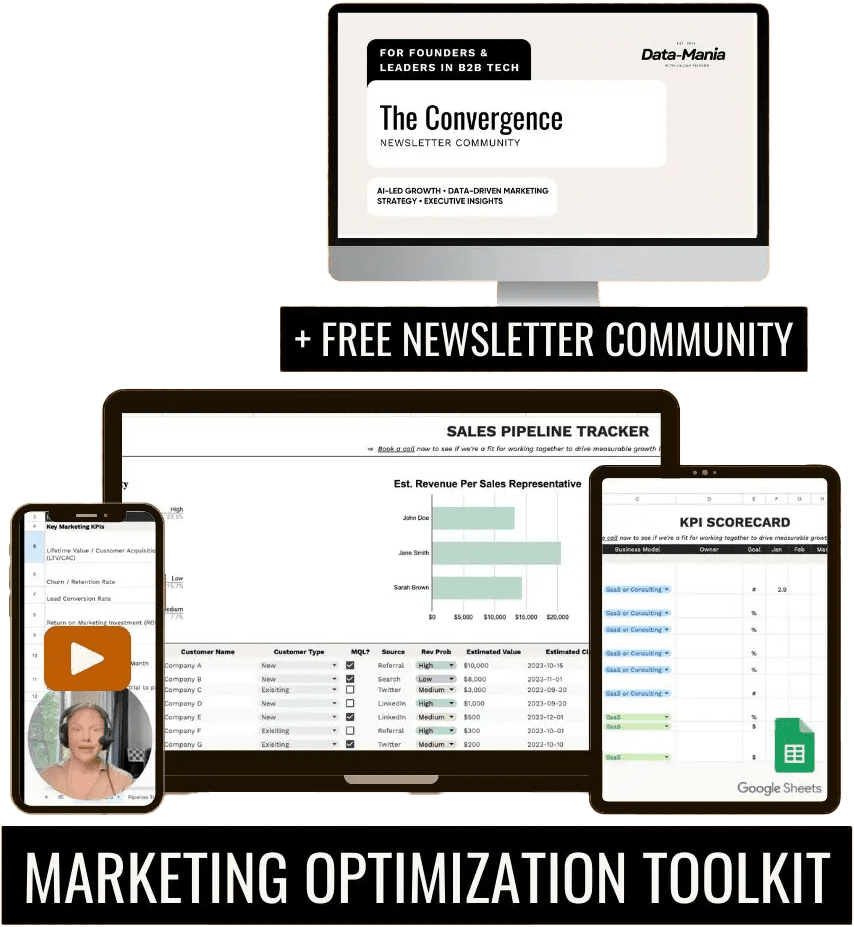
In this quick introductory blog post, you’ll see what marketing mix modeling is. You’ll also learn how you can use it to increase the profitability of your company.
I first learned about marketing mix modeling while gathering a client testimonial from Kam Lee. For the record, the “mixture” of Kam’s marketing data science expertise and the startup strategies he learned from within my course, led him to hit $350k in his first year of business!

If you want to learn more about how he marketed his marketing mix modeling services (pardon the pun 🙂 ) to get such a terrific business outcome, I recommend you start by watching my free masterclass on the 4 Steps To Monetizing Data Expertise in Your Small Business.
Now that you know the backstory, let’s dig into marketing mix modeling…
What is a Marketing Mix?
 A marketing mix is simply a mixture of features that you use to describe your product. It’s comprised of attributes that describe the core product and the product marketing features you adopt when taking the product to market.
A marketing mix is simply a mixture of features that you use to describe your product. It’s comprised of attributes that describe the core product and the product marketing features you adopt when taking the product to market.
A marketing mix is commonly defined as the 4Ps, which are:
-
- Product
- Place
- Promotion
- Price
When we talk about marketing mix, we are really talking about a particular point. This is identifying the exact mixture of Product, Place, Promotion, and Price. All that is responsible for producing the optimal number of sales.
You don’t have to use the 4Ps though. You could use the 7Ps. This is more commonly used when using marketing mix modeling to optimize the sale of services.
The big thing you need to know about the “marketing mix” is that it should contain features which are reflective of both your product strategy and your product marketing strategy. Those features should be directly relevant to how well that product sells.
If you’re interested in learning more about data product management, I encourage you to check out:
-
- This blog post on what a data product manager does on a daily basis
- This blog post on: A Self-Taught Data Product Manager Curriculum and
- This free CV template for aspiring data product managers here.
What is Marketing Mix Modeling (MMM)?
Once you’ve defined the core product and product marketing attributes that you want to model within your “marketing mix” (in our case, the 4 Ps), you’ll undoubtedly want to evaluate how that mixture of features directly impacts profitability. “Marketing mix model” is the model you’d use to make that type of prediction.
Marketing mix modeling is simply the act of taking historical sales and marketing time series data, and using statistical machine learning methods to uncover relationships between your core product and product marketing features and sales.
And marketing mix modeling? It is simply the act of taking historical sales and marketing time series data. Then we use statistical machine learning methods. These methods will uncover relationships between your core product and marketing features (as represented by the 4Ps) and sales. Once you’ve ascertained those relationships, you’ll be able to predict future sales and tweak your product marketing accordingly.
The entire point of marketing mix modeling is to quantify direct relationships between your marketing mix and sales for your business.
How does Marketing Mix Modeling Increase Profitability?
Since the entire point of marketing mix modeling is to quantify direct relationships between your marketing mix and sales for your business, there is not a lot of room for conflating the issue.
Once you’ve identified statistically (and economically) significant relationships between your marketing mix and actual sales for the business, you’ll be able to reliably predict what marketing mix will produce even more sales. Then, just adjust the product marketing strategy to increase profits.
More sales with the same (or less) marketing spend results in increased profitability. It’s as simple as that.
Learning How to Implement MMM
As far as books, a lot of stuff out there is for non-technical marketing people. It’s not that helpful for actually learning how to do machine learning implementation of marketing mix modeling. In fact, from what I’ve seen online, bloggers tend to make the topic A LOT more confusing than it actually needs to be.
There aren’t really any online courses on this topic yet, but you can actually start learning to do it for free by looking at this training documentation over at R-Studio. And to learn how to implement it in Python, you may want to check out this free demo over on Kaggle too.
If you enjoyed this blog post, please share it with your friends using the share bar below.








